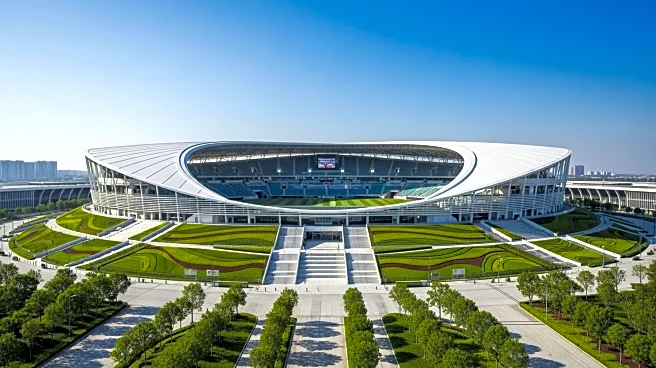What's Happening?
The Buffalo Bills are constructing a new stadium in Orchard Park, New York, set to open in 2026. The $2.1 billion New Highmark Stadium project is the most expensive construction endeavor in the region's history and represents the largest public investment ever made in an NFL venue. The stadium will feature a minimum of 60,000 seats, with expandable capacity for special events, and include premium areas such as suites and clubs. The design is open-air with a canopy covering 65% of the seats, and the field will be heated to ensure playability during Buffalo's winter months. The project is funded by $850 million in public money, with contributions from New York State and Erie County, while the Bills are responsible for $690 million, supported by sales of personal seat licenses.
Why It's Important?
The construction of the new stadium is significant for the Buffalo Bills and the local community, as it ensures the team's presence in Western New York for the next 30 years. The investment in the stadium is expected to boost the local economy by attracting more visitors and events to the area. However, the funding deal has been controversial, with critics arguing that public funds should have been allocated to health and social services rather than subsidizing an NFL team. Supporters of the project emphasize the economic benefits and the importance of retaining the Bills in the region.
What's Next?
The new stadium is scheduled to be completed by summer 2026, with all home games for the season planned to be played there. Current season ticket holders will have priority in selecting seats, while non-season ticket holders can join a waiting list. As the project progresses, stakeholders will continue to monitor its impact on the local economy and community, addressing any concerns related to the allocation of public funds.
Beyond the Headlines
The debate over the stadium funding highlights broader issues regarding the use of public money for private enterprises. This situation raises ethical questions about prioritizing economic development over essential public services. The long-term implications of such investments may influence future decisions on public-private partnerships in sports and other industries.












